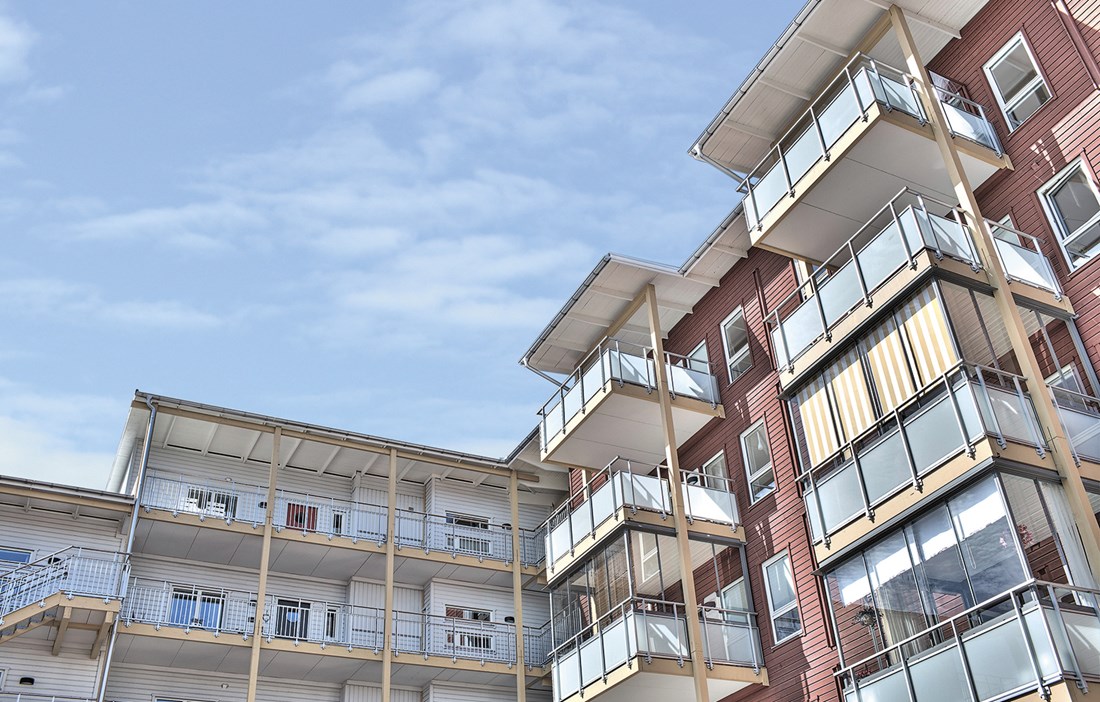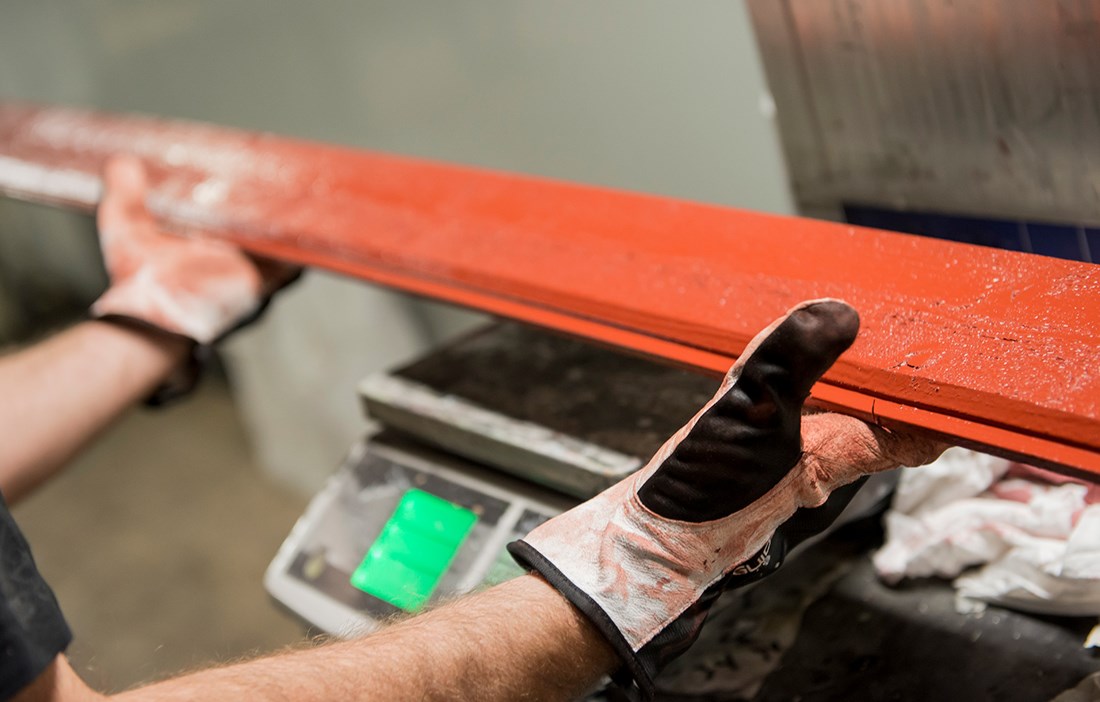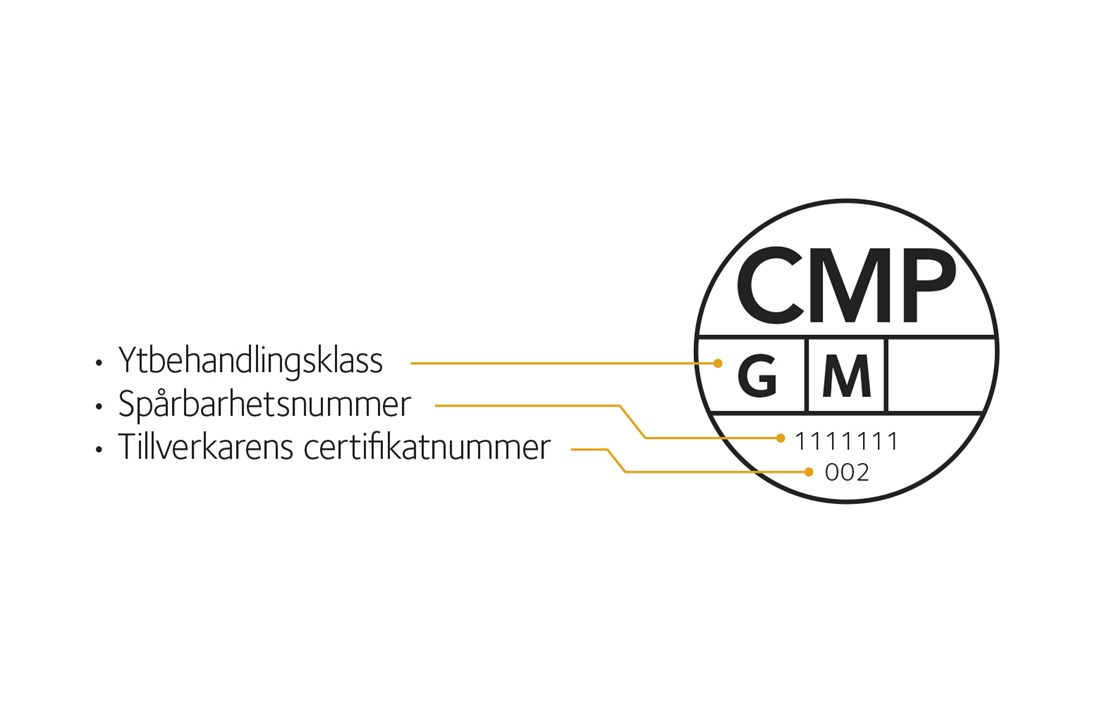The task of developing a regulatory framework for the CMP system began back in 2011, with the aim of ensuring consistently high quality for industrially coated cladding boards for external use. Together, the sawmill and paint industries have developed a joint system to improve the quality while maintaining the price level.
Kerstin Sedendahl, CEO of Mellangården Miljö och Utveckling, was involved in developing the regulations and is well versed in the kind of quality assurance the certification brings:
“The certification of painting facilities means that the paintshop has undergone extensive third-party checks and uses quality assured wood raw materials, paint systems, control procedures and work routines, to ensure an end product of even and high quality.”
Per-Erik Andersson, CEO of Sveden Trä, also welcomes the CMP system:
“Our procedures and production methods have been tightened up and the labelling equipment that has now been installed makes the manufacturing process fully transparent, resulting in a product that customers can really trust.”
Johan Larsson, who is responsible for the CMP system at Swedish Wood, is pleased with the support from the sawmill and paint industries:
“An industry-wide quality assurance system of this nature requires broad engagement from our member companies who manufacture the products, in order for it to make an impact along the chain and with the end customer. A total of 15 facilities have so far been certified, which accounts for the majority of the suppliers of industrially coated cladding boards for external use,” he reports.
The requirements relating to the wood raw material for CMP-approved cladding cover commercial variety, moisture content, wood properties, knot pattern and deformations. In addition, there are specific requirements concerning the processing of the exterior cladding boards, including ripping procedure, surface condition, finger-jointing, storage and so on. Manufacturing takes place under controlled conditions, with regular third-party checks.
Paints and paint systems in the CMP system meet the requirements and definitions in an agreed standard that includes various sustainability categories. The CMP system currently comprises three surface treatment classes. Specific requirements are set for each class. CMP-G/M equates to the category stable, CMP-G equates to the category semi stable and CMP-S equates to the category non stable. The category is based on how much moisture a sample board absorbs over a 24-hour period. Stable means a change in weight of max 0.2 percent. The formulation for distemper in surface treatment class CMP-S is required, amongst other things, to correspond to traditional distemper.
Prescribing the use of CMP-approved external cladding reduces the overall cost of a building project. Compared with untreated cladding that is hand-painted on the construction site, the customer saves between 15 and 25 percent of the façade’s overall cost. This is because of the paint’s efficient industrial application and drying, which in turn reduces scaffolding costs and saves time on site. Industrial coating also minimises the risk of painting work being interrupted by rain, a not uncommon problem when painting on site, which also tends to raise the moisture content of the cladding. The cladding can even be left for up to 12 months after installation before getting its finishing coat.
Industrially coated cladding for exterior use is a product category whose sales have really taken off in recent years, but without any defined standards or performance requirements. The new rules set out in the CMP system define performance requirements in the different surface treatment classes. The class divisions are based on approved results of tests following standards SS-EN 927-3:2012 and SS-EN 927-5:2007.
Third-party controlled and approved paint systems under the CMP system are currently produced by six of Sweden’s leading paint companies. This enables a customer to be confident about finding a paint for the on-site topcoat that is compatible with the industrial coating.
Individual labelling of each cladding board makes it easier for the customer to know what work is required to complete the surface treatment, while also minimising the work necessary at the construction site. It also provides good traceability, making it simple to establish which company manufactured the cladding. Being able to specify one of the surface treatment classes in the CMP system makes it easy to conduct supplier-independent procurement, while at the same time being guaranteed consistently high quality from the chosen façade material.
CMP-approved cladding should be given its finishing coat or coats within no more than 12 months of installation. A shorter time between installation and finishing reduces the risk of the cladding being adversely affected by its surroundings, in the form of air pollution or discolouration, for example. When applying the finishing coat, the surface moisture content should be checked in line with Swedish standard AMA Hus 18. The boards should have a moisture content of 16 percent or lower to ensure a good, long-lasting result. Installed CMP-approved cladding should be given a visual inspection and approval before starting to apply the finishing coat, to ensure that dirt and discolourations are not present and the cladding is correctly fitted.
For the best end result, the recommendation is to use the same paint system as the one applied previously. This ensures the most durable finish. End wood treatment is a crucial factor for the cladding boards’ service life and maintenance intervals. End wood treatment should therefore always be carried out in conjunction with the finishing coat at the construction site. The complete paint system must be applied to end wood and other exposed wood that might arise from sawing, mechanical damage and so on.
text Holger Gross























